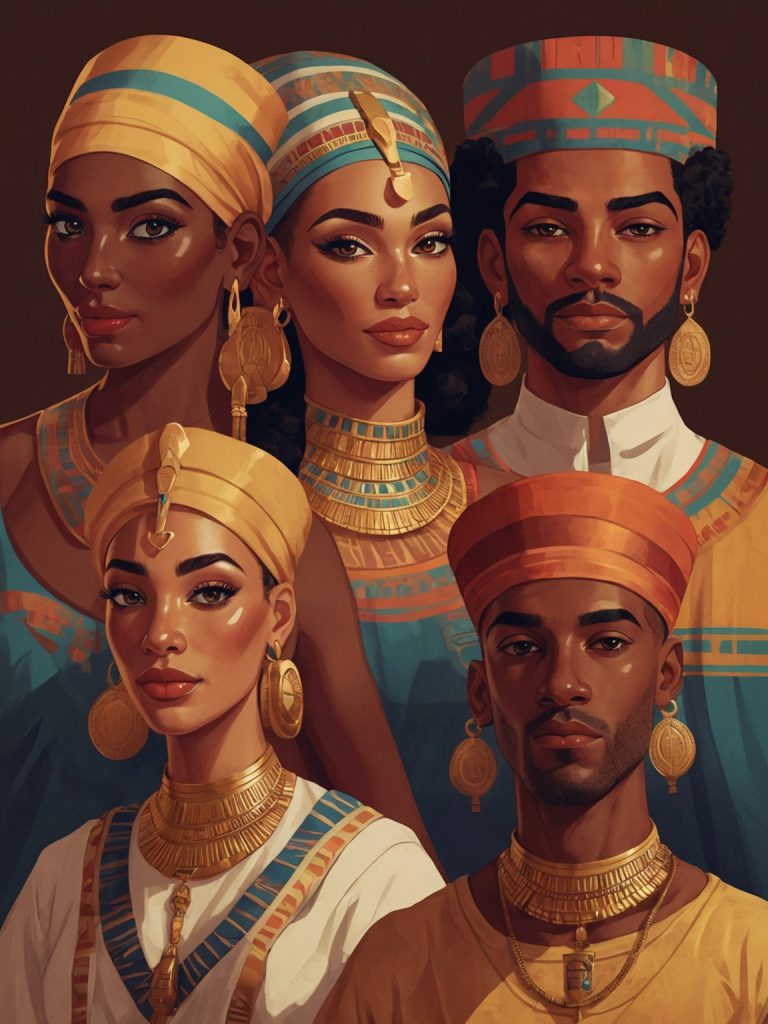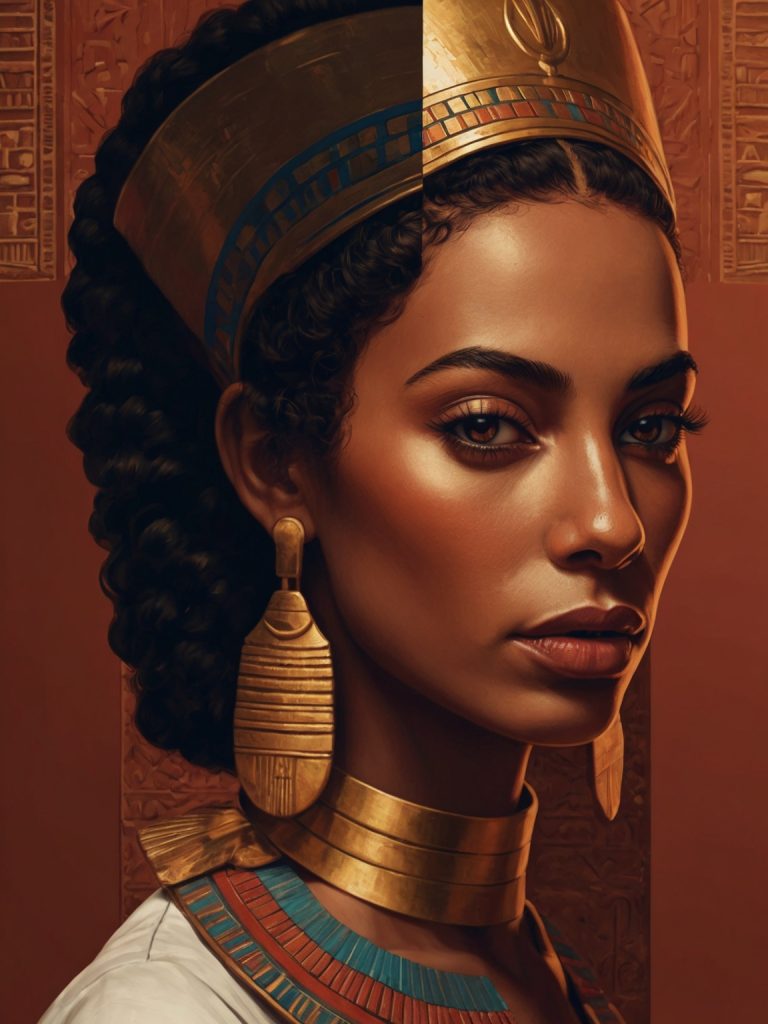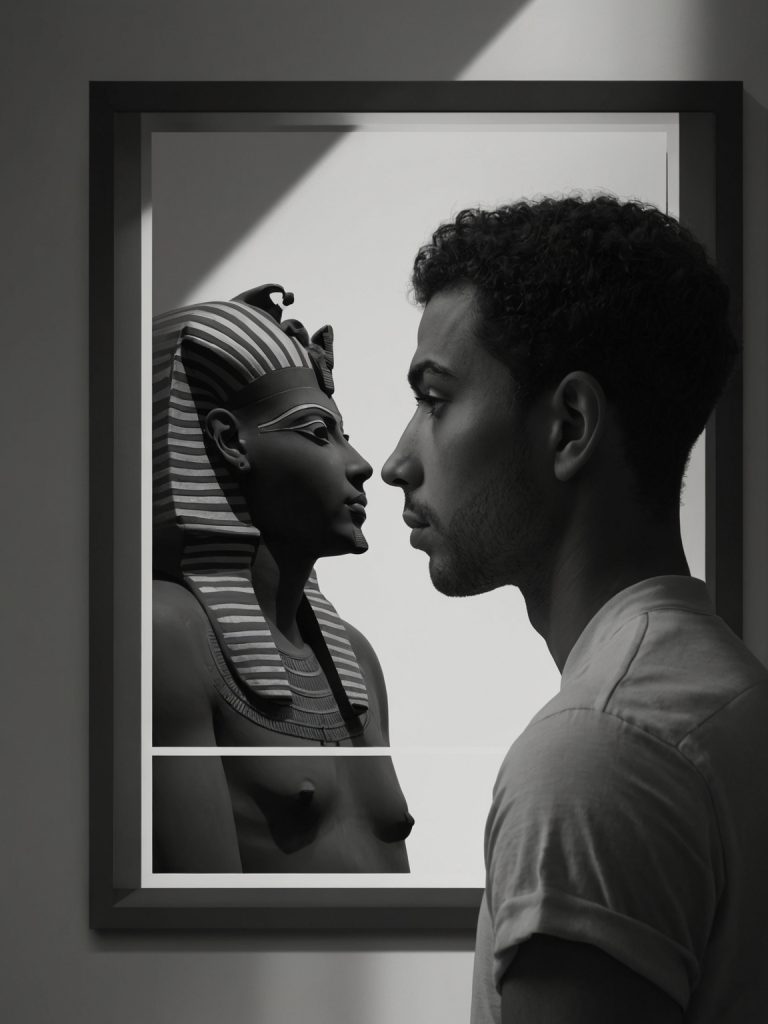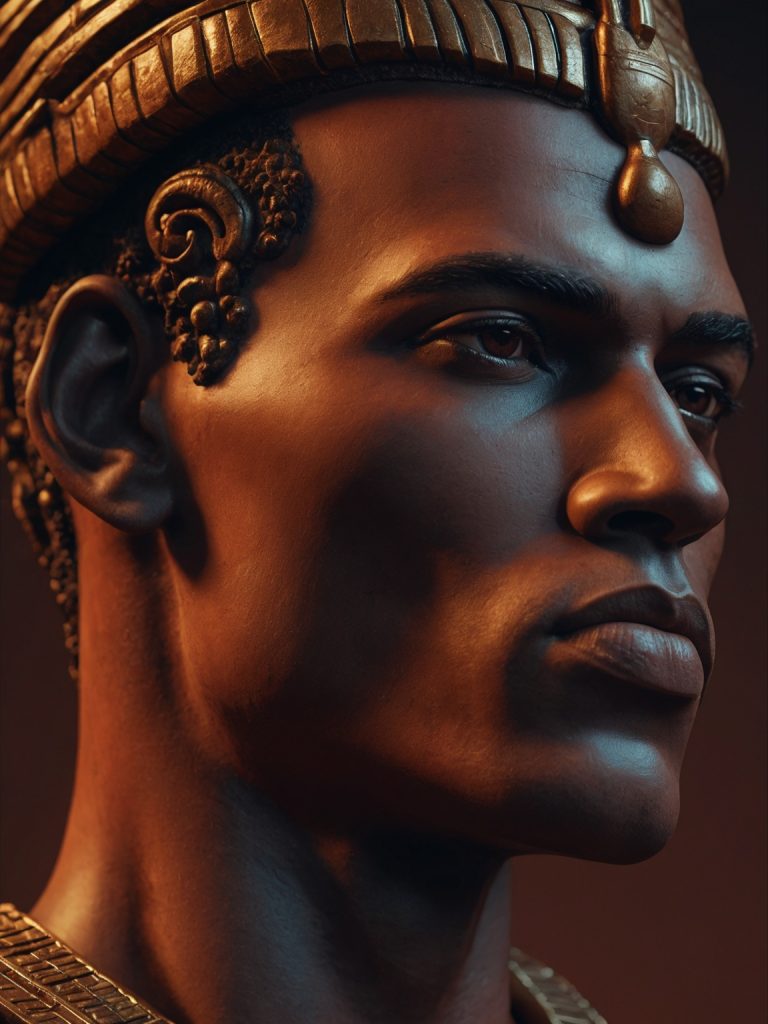This article goes beyond basic explanations to reveal a hidden layer of communication within Egyptian art. You’ll gain a deeper appreciation for how artists used color to tell stories without spoken language.
TL;DR
- Ancient Egyptian art used skin tone as a symbolic tool, not a realistic portrayal.
- Reddish hues signified Egyptians, while yellowish or darker tones indicated foreigners.
- Understanding artistic conventions helps decode the messages artworks convey.
Have you ever wondered why men in ancient Egyptian art often appear dark-skinned while women are depicted as lighter? This apparent discrepancy has puzzled many, but the answer lies not in reality, but in the very purpose of Egyptian art itself.
Beyond Sun Exposure: Art as Representation, Not Replication
Women did work outside alongside men in some capacities. However, the skin tone difference isn’t about actual sun exposure. It’s all about how the Egyptians used art to convey meaning.
Modernity, with its emphasis on photorealism, makes us expect art to be a perfect likeness. But ancient Egyptian art wasn’t about capturing a person’s exact appearance. It was a filtered message, shaped by the artist’s intent.

Decoding the “Filter”: Artistic Conventions and Identity
Imagine a painting as a window with a unique “filter” applied by the artist. We, the viewers, must understand this filter to truly appreciate the scene.
Egyptians often used labels to identify figures, but they also employed more subtle methods. Take a man named Harkhuf. He wanted his artwork to showcase his Egyptian identity, his gender, and his adherence to societal norms – all crucial for a successful afterlife. So, he’s depicted with typical Egyptian clothing, a characteristic Egyptian body type, and the reddish skin tone commonly associated with Egyptians in art.
This reddish hue doesn’t necessarily reflect reality. Harkhuf might have been shorter or less wealthy than his portrayal suggests. Additionally, Egypt’s vast size meant someone from the south wouldn’t look identical to someone from the north. Yet, in art, they’d both be presented as “Egyptian” through standardized conventions.
Beyond Egyptians: Using Color for Non-Egyptians

So, how did the Egyptians depict foreigners? Clothing and body type played a role, but the most striking difference was often skin color. People from the north were depicted with yellowish hues, while those from the south appeared darker. This quick visual cue informed viewers they were looking at outsiders.
Interestingly, some Egyptian officials from Nubia (a southern region) were shown with dark skin in other people’s tombs, where their Nubian heritage was relevant. However, in their own tombs, they were depicted with “Egyptian” skin tones, emphasizing their Egyptian identity within that context.
The actual skin color of these individuals wasn’t the point. By utilizing established artistic conventions, the Egyptians created a visual language that transcended spoken language and labels. This rich system of communication ensured their messages would be understood for generations to come.

Actionable Advice: View Art as a Lens, Not a Mirror
- Shift your Perspective: When encountering any art form (paintings, movies, sculptures, etc.), move beyond the initial impression and consider the purpose behind its creation. Ask yourself: “What message is the artist trying to convey?”
- Seek Context: Research the artist, the historical period, and the cultural background of the artwork. Understanding the context can shed light on the artistic choices made.
- Identify Symbolism: Look for recurring motifs, colors, and compositions. These elements often hold symbolic meaning within the specific artistic tradition.
Evidence to Support the Advice:
- A study published in the journal “Psychology of Aesthetics, Creativity, and the Arts” https://www.apa.org/pubs/journals/aca found that viewers who actively considered the artist’s intent behind an artwork reported a greater appreciation for the piece.
- The Smithsonian Institution emphasizes the importance of context in their educational resources https://learninglab.si.edu/. They argue that understanding the historical and cultural background allows viewers to make more informed interpretations.
- In his book “How to Read a Painting” https://www.amazon.com/How-Read-Painting-Lessons-Masters/dp/0810955768, art historian Molly Hatch provides a framework for identifying symbolism in various artistic movements.

Table: Decoding Skin Tone in Ancient Egyptian Art
| Skin Tone | Who it Represents | Why this Color? |
|---|---|---|
| Reddish | Egyptians | Common artistic convention for Egyptians |
| Yellowish | People from the North | Signifies foreign origin |
| Darker | People from the South | Signifies foreign origin |
This table summarizes the key takeaway from the article regarding skin tone depiction in ancient Egyptian art. It highlights that skin color wasn’t meant to be a realistic portrayal, but rather a symbolic tool used to identify a character’s ethnicity within the artwork.
By incorporating these tips, you can become a more active and informed art observer, unlocking deeper layers of meaning within the works you encounter.
Ready to Delve Deeper?
Intrigued by the artistry and symbolism of ancient Egypt? Here are some resources to fuel your exploration:
- John Baines’ “Visual and Written Culture in Ancient Egypt” (2007): An excellent collection exploring Egyptian artistic conventions.
- Uros Matic’s “Ethnic Identities in the Land of the Pharaohs” (2020): A clear introduction to skin color and ethnicity in Egyptian art.
So, the next time you see an ancient Egyptian artwork, remember: it’s not just a picture – it’s a carefully crafted message waiting to be decoded!







